Finding key quality pieces at an auction is all about developing your eye for detail, as well as knowing the historical context of the items in question. This is true for furniture, paintings, sculpture, jewellery, ceramics and other collectables. But, understanding the difference between fakes/reproductions and the real thing arguably requires a particular discernment when it comes to specialist objects such as Chinese porcelain.
Porcelain – which is a particularly strong, translucent and vitrified (ie impervious to water) form of ceramic fired at high temperatures – was invented in China over several centuries. By the 13th century, the finest porcelain in the world was produced in the Chinese city of Jingdezhen and much of it was created for the imperial court. Situated in the Jiangxi province in the southeast of China, Jingdezhen is still a hub for artisanal ceramics, and the imperial kiln sites with their large piles of porcelain shards remain a legacy to the heyday of Chinese imperial porcelain.
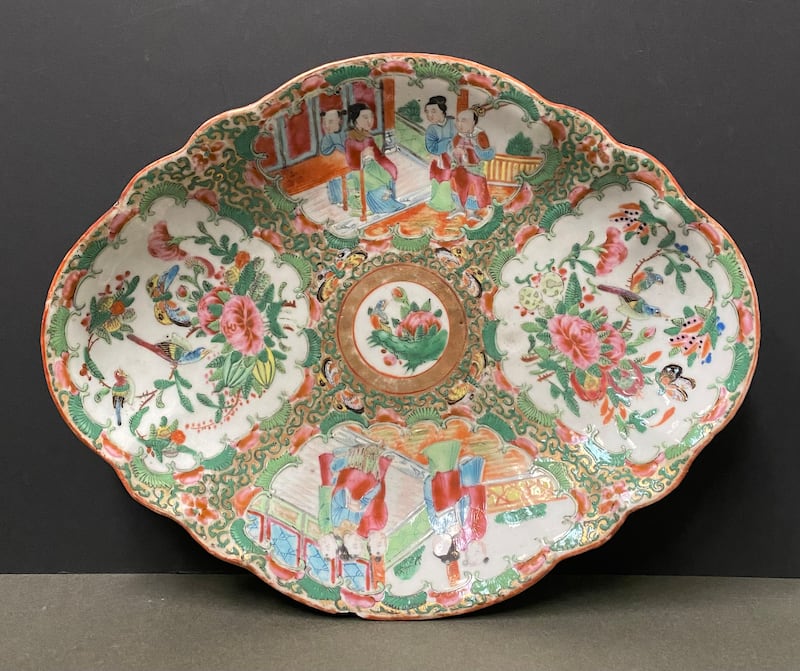
The invention of the blue-and-white porcelain, which we often associate with Chinese porcelain, came about through the importation of cobalt from Persia via Silk Road traders. Middle Eastern decorative influences were also added to the traditional Chinese bird, plant, fish and dragon designs due to these trading relations.
According to an expert at Sotheby’s, the Ming and Qing dynasties are particularly renowned for the exquisite achievements in porcelain, not least because of the important patronage of emperors.
RM Block
[ ‘The best shop window in the business’: Irish antique fairs to visit this summerOpens in new window ]
While the early Ming dynasty was regarded as “the age of porcelain” due to advances in ceramic techniques, the Qing dynasty was known as “the golden age of porcelain”, and European artisans were even invited into palace workshops in the Forbidden City in Beijing.
Historical pieces of Chinese porcelain – such as vases, dishes and urns – remain treasured in the western world, no doubt partly due to the fact that it wasn’t until the 18th century that ceramic artists in Europe began to develop techniques to create porcelain.
Hegarty Antiques will have a large Chinese porcelain blue-and-white temple vase from the late Qing dynasty (1644-1912), for sale with an estimate of €300-€600 in its online auction on August 14th. Its domed lid, with Foo lion finial, adds a delicate contrast to the images of dragons chasing the flaming pearls of wisdom on the vase itself.
Lisa Keane, auction co-ordinator for Hegarty Antiques in Bandon, Co Cork, says that much of the blue-and-white porcelain from this period was specifically made for the export market. “Our buyers are from the trade, private collectors and interior designers. If we have a rare item, it will attract interest from buyers from China. I expect this piece might be bought as a decorative object by an interior designer,” she says.
[ Live auction at Castle Durrow in Laois to appear on British TV seriesOpens in new window ]
A late 19th-century Chinese canton famille rose serving platter (€150-€250) is another item for sale at Hegarty’s auction next week. The design is part of the porcelain decoration that emerged in the 1820s in China for the export market. “The elaborate and intricate design, an established provenance and inscription and age, is what makes these pieces desirable. I believe Chinese buyers are interested in cultural patrimony, while western buyers choose pieces for aesthetic reasons,” says Keane.
Experts suggest that one of the key ways to spot a replica of an antique porcelain piece is to look out for “fake” flaws. Antique porcelain will often have soft natural flaws on the surface of the piece, while fake flaws imitating the genuine flaws will be more uniform and the surface of a replica piece of porcelain may also be shinier.
Meanwhile, De Búrca Rare Books has some interesting first editions, photographs and prints in their new arrivals. Those holidaying in the west of Ireland at the moment might be interested in The Aran Islands by John Millington Synge, with drawings by Jack B Yeats (€950). The book, which was published in 1907, is based on Synge’s multiple visits to the Irish-speaking islands of Inishmore, Inishmaan and Inisheer, and includes his observations of the culture and interactions with the people.
Collectors – and indeed Shackleton museums – may also be interested in a rare photograph of the crew of the Shackleton-Rowett Expedition also known as the Quest Expedition in 1921 (€1,850). The Kildare-born explorer, Sir Ernest Shackleton, died on the Quest ship on what was to be the final episode in the heroic age of Antarctic exploration. Interestingly, wreck hunters found the Quest on the seafloor of the coast of Newfoundland, Canada, in June 2024.
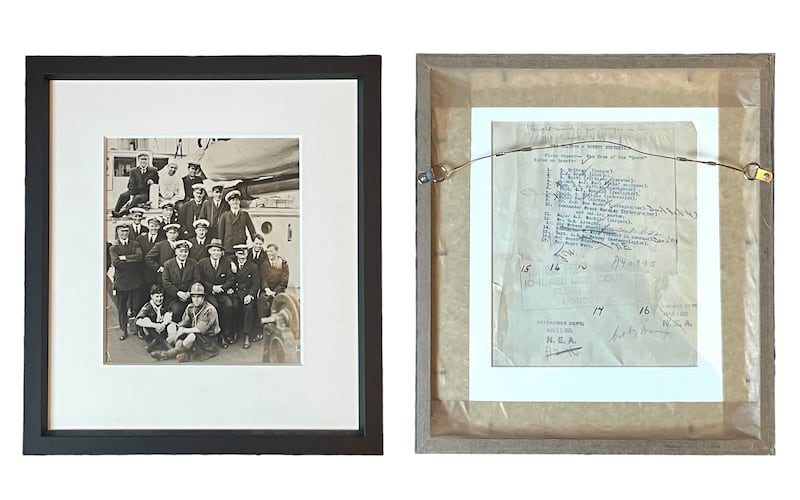
“Rare Shackleton books and collectables have risen significantly in recent years. This particular photo is exceedingly rare and one of the last photographs ever taken of Sir Ernest Shackleton, because he died on board the ship. The names of the crew are also on the back of the photograph,” explains Will De Búrca.
Hegartyantiques.com; deburcararebooks.com
What did it sell for?
Asui Kawase, A Belfry on the Koya mountain
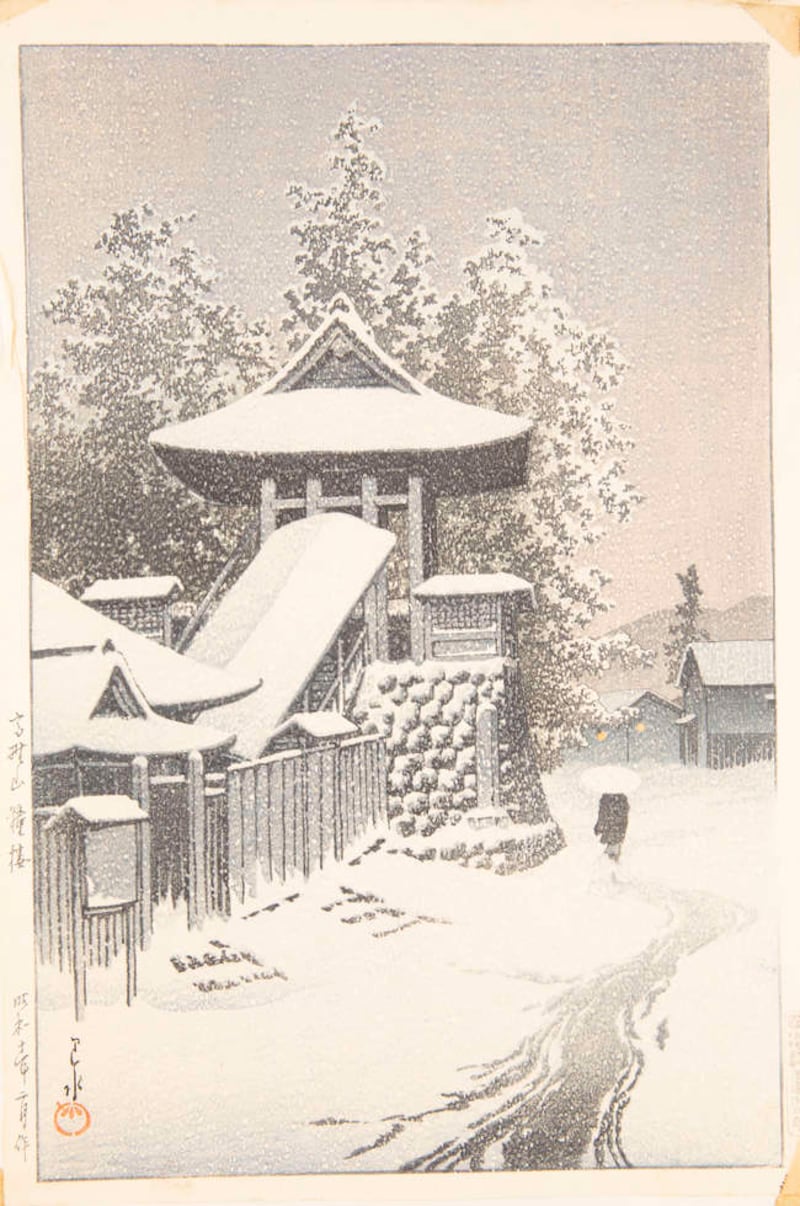
Estimate: €200-€300
Hammer price: €2,800
Auction house: Adam’s
Maurice MacGonigal, The Red Cliffs of Dúinín, Co Kerry
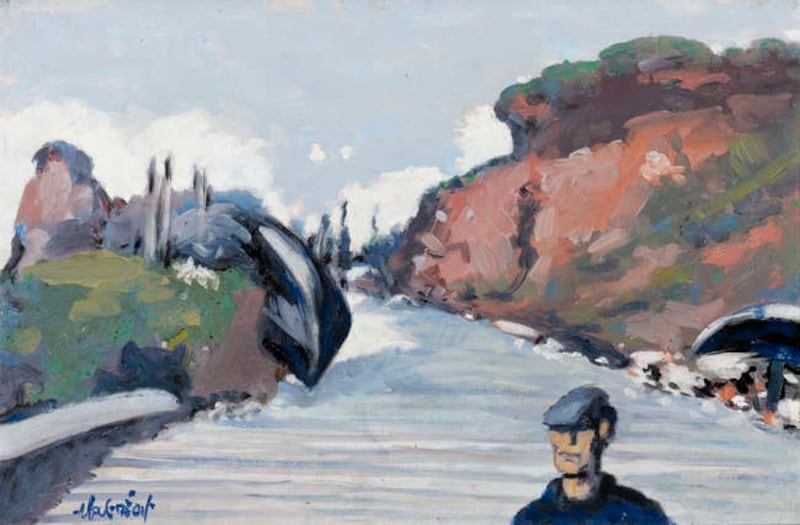
Estimate: €800-€1,200
Hammer price: €1,300
Auction house: Adam’s
Ewan Gibbs, Blooms Hotel, Dublin
Estimate: $800-$1,200 (€730-€1,096)
Hammer price: $2,280
Auction house: Sotheby’s
Pair of small 19th century Meissen vases
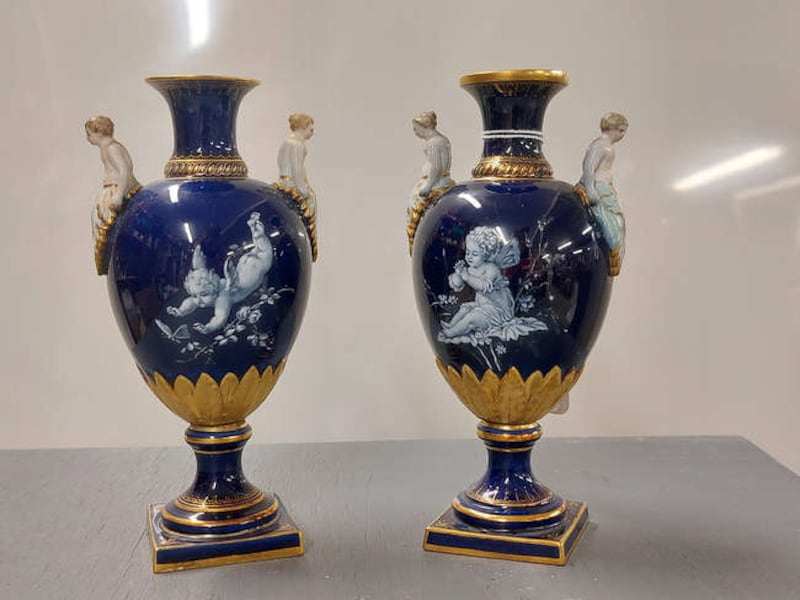
Estimate: €100-€200
Hammer price: €1,300
Auction house: Adam’s
- Sign up for push alerts and have the best news, analysis and comment delivered directly to your phone
- Join The Irish Times on WhatsApp and stay up to date
- Listen to our Inside Politics podcast for the best political chat and analysis


















